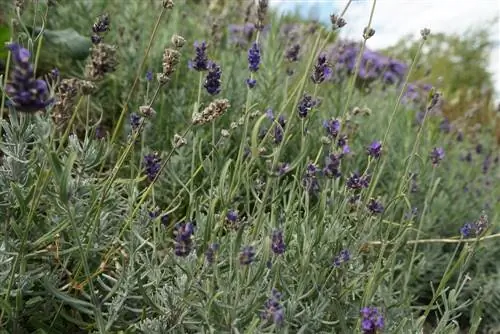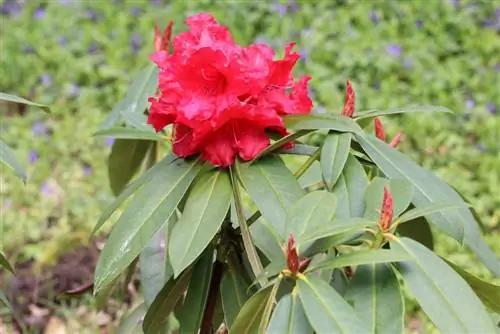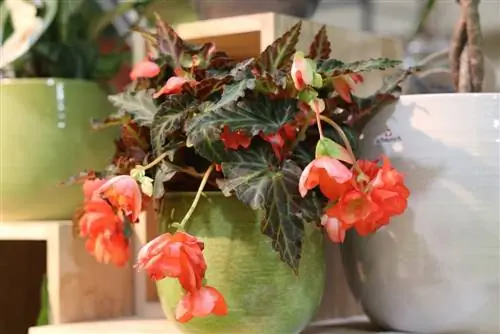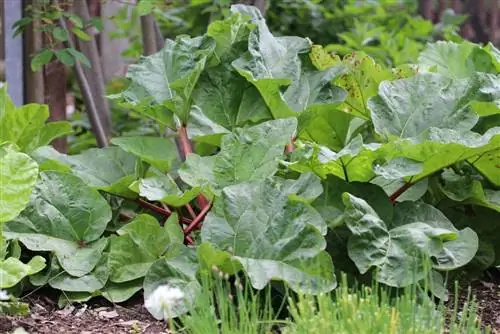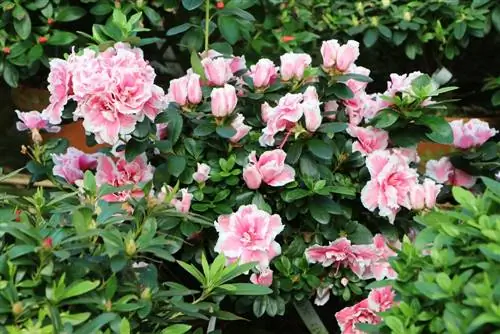- Author admin [email protected].
- Public 2023-12-17 03:39.
- Last modified 2025-01-24 12:45.
Lavender has the botanical name Lavandula Angustifolia and grows as a subshrub. This is a relatively easy-care herb plant, but it depends on very specific location and soil conditions.
Sun and warmth
Lavender originally comes from the warm regions around the Mediterranean; the plant is particularly widespread in the south of France. In its homeland, the plant prefers sunny and dry locations on south-facing slopes. Although Lavandula Angustifolia and some other lavender varieties are quite hardy in this country, the plant thrives best under native conditions. It can adapt to compromise solutions, but then the growth and flowering are not as lush. In very cool and shady conditions, in extreme cases the flowering phase may even stop completely. Therefore, the right lighting conditions at the location are extremely important, so a careful selection must be made.
- Feels best in a sunny location
- Southern locations with high solar radiation are ideal
- Can even cope without any shade at all
- Can easily tolerate high heat
- Partly shaded places are possible, but not ideal
- Shady and cool locations are not suitable at all
Tip:
Based on the local weather conditions, only the winter-hardy lavender varieties are recommended for cultivation in the garden.
Additional Protection
Lavender not only prefers sunny but also sheltered locations. The plant does not like strong winds or heavy rains. Open locations are therefore not suitable as locations where the plant is exposed to the weather without protection. If you cannot provide the right location conditions for lavender in your garden, you should take certain preparations before planting. This can be done by components in the immediate surroundings that have heat storage capacity. If the location is in high mountain areas with cool temperatures, cultivation in the winter garden or greenhouse is more suitable than outdoors.
- Sheltered locations have greater heat supply
- House walls and walls offer protection
- Outer walls of garages and retaining walls also
- Garden houses and closed fences are possible
- Also protect lavender from rain
- A slightly overhanging roof is well suited for this
Soil texture
From its Mediterranean homeland, lavender is used to dry and nutrient-poor soil qualities. There the plant has adapted very well to the difficult conditions. Thanks to the extremely long-growing taproots, the plant can get enough water and the necessary nutrients from the soil even from a depth of several meters. That's why lavender needs similar substrate properties in home gardens. Too much rain can cause problems if it cannot drain properly. This is particularly the case in autumn and winter when the soil becomes permanently waterlogged due to persistent rainfall. This makes the plant feel very uncomfortable and, in the worst case, the roots begin to rot. In addition, lavender does not cope with heavy clay and peat soils. A solution is to cultivate the soil before planting to create suitable conditions.
- Ideal is barren and dry soil
- Prefers nutrient-poor soils
- Substrate should also be sandy or gravelly
- Lavender does not tolerate waterlogging at all
- Pay attention to slopes when planting
- Otherwise, create drainage if the soil is moist
- Loosen the soil beforehand and enrich it with sand or gravel
Overwintering at the location
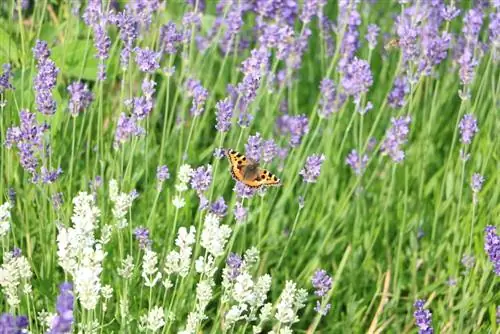
Many of the lavender varieties are quite frost hardy and can remain in the garden bed in winter. However, it can happen that the plants dry out in sunny and cold weather without rain. This is also possible if the plant is under a thick blanket of snow. A location under a roof overhang and in front of a warming wall is also ideal for this time of year. In addition, non-hardy varieties need winter quarters and should therefore only be planted in pots.
- Cover plants in the bed with brushwood or pine branches
- Protects the earth from subzero temperatures and drying out
- Place the bucket on protective polystyrene plates
- Wrap all around with plant fleece
- A frost-free garage with a window is ideal for overwintering
- Alternatively move to a bright basement or attic
- Sunny windowsill in cooler living rooms is also possible
Note:
Natural stone walls store a lot of the sun's heat even on cool winter days and release it to the heat-loving plants at night as protection.
Locations for keeping containers
Lavender can also be cultivated well in a pot. In this way, the supply of nutrients and the ability to drain can be better controlled. You can prevent waterlogging by laying gravel or shards of pottery over the drainage hole. In addition, the planter can be moved, a big advantage for non-hardy varieties.
- Pot keeping on balcony and terrace possible
- Make sure you have places protected from rain and wind
- Location should always have plenty of sun
- All-year-round location indoors is also possible
- Window sills in full sun in the kitchen and living room are ideal
- Air frequently, but do not expose the plant to drafts
- Put on the balcony on warm days
- Dark corridors and cool bedrooms are not suitable

